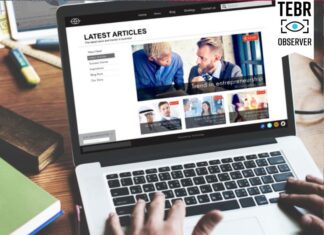Remote work offers numerous benefits, such as increased flexibility, reduced commute times, and the ability to attract talent from a broader geographical area. However, it also presents unique challenges, particularly when it comes to effectively onboarding new employees. Traditional in-person onboarding methods may no longer be feasible or practical, necessitating a shift in approach.
As the remote work trend continues to gain momentum, organizations must develop robust strategies for remote employee onboarding. By doing so, they can ensure a seamless transition for new hires, foster a sense of belonging, and maintain productivity and efficiency throughout the onboarding process.
Challenges of Remote Employee Onboarding
Onboarding remote employees presents several challenges that organizations must address. One of the primary concerns is the lack of face-to-face interaction, which can make it difficult to establish personal connections and foster a sense of belonging within the company culture. Additionally, remote onboarding may pose logistical challenges, such as ensuring that new hires receive the necessary equipment, access to systems, and training materials in a timely manner.
Another challenge is the potential for miscommunication or misunderstandings due to the lack of in-person interactions. Without the ability to read body language or engage in casual conversations, it can be harder to convey information effectively and build rapport with new team members.
Furthermore, remote onboarding may require additional efforts to ensure that new hires understand the company’s values, mission, and expectations, as well as their specific roles and responsibilities within the organization.
Benefits of Remote Employee Onboarding
Despite the challenges, remote employee onboarding also offers several benefits that organizations should consider. One significant advantage is the ability to streamline the onboarding process by leveraging digital tools and platforms. This can lead to increased efficiency, reduced costs, and a more consistent onboarding experience for new hires.
Additionally, remote onboarding can provide greater flexibility for both the organization and the new employee. New hires can complete onboarding tasks at their own pace and in a comfortable environment, potentially leading to better retention of information and a smoother transition into their new roles.
Moreover, remote onboarding can help organizations tap into a broader talent pool, as they are no longer limited by geographical constraints. This can lead to a more diverse and skilled workforce, which can ultimately contribute to the organization’s success.
Best Practices for Remote Employee Onboarding
To overcome the challenges and capitalize on the benefits of remote employee onboarding, organizations should adopt best practices tailored to this new paradigm. Here are some effective strategies to consider:
- Develop a structured onboarding plan: Create a comprehensive onboarding plan that outlines the key milestones, tasks, and deliverables for new hires. This plan should be communicated clearly and consistently to ensure a smooth and organized onboarding experience.
- Leverage technology and digital tools: Utilize video conferencing platforms, online training modules, and employee recognition tools to facilitate communication, training, and knowledge sharing during the onboarding process. These tools can help bridge the gap created by the lack of in-person interactions.
- Assign an onboarding buddy or mentor: Pair new hires with experienced employees who can serve as mentors or onboarding buddies. These individuals can provide guidance, answer questions, and help new team members navigate the company’s culture and processes.
- Foster virtual team-building activities: Organize virtual team-building activities or social events to help new hires connect with their colleagues and feel part of the team. These activities can help build rapport and foster a sense of belonging within the organization.
- Provide regular feedback and support: Implement regular check-ins and feedback sessions to ensure that new hires are progressing smoothly through the onboarding process. Address any concerns or challenges they may be facing and provide the necessary support and resources.
- Emphasize company culture and values: Ensure that new hires understand the company’s culture, values, and mission from the outset. Incorporate these elements into the onboarding process through virtual presentations, interactive sessions, or other engaging activities.
- Offer ongoing training and development opportunities: Provide new hires with access to ongoing training and professional development resources. This can help them continuously enhance their skills and knowledge, even in a remote work environment.
Importance of Remote Work Security Practices
Remote work security practices are crucial for organizations to protect their data, systems, and intellectual property. As employees access company resources from various locations and devices, the risk of security breaches and cyber threats increases. Implementing robust security measures is essential to ensure the confidentiality, integrity, and availability of sensitive information.
One key aspect of remote work security practices is the implementation of secure communication channels and collaboration tools. Organizations should provide employees with secure video conferencing platforms, messaging applications, and file-sharing solutions that offer end-to-end encryption and robust access controls.
Additionally, organizations should enforce strong password policies, multi-factor authentication, and regular software updates to mitigate the risk of unauthorized access and cyber-attacks. Providing cybersecurity awareness training to employees is also crucial, as they play a vital role in identifying and preventing potential security threats.
Understanding Mobile Device Management (MDM)
The definition of MDM is a crucial component of remote work security practices. MDM refers to the software and tools used by organizations to monitor, manage, and secure mobile devices, such as smartphones and tablets, that employees use to access company data and resources.
MDM solutions enable organizations to enforce security policies, manage device configurations, and remotely control and monitor mobile devices. This includes the ability to remotely wipe data from lost or stolen devices, ensuring that sensitive information remains protected.
By implementing MDM, organizations can maintain a consistent level of security across all mobile devices used for work purposes, regardless of their physical location or ownership (company-owned or personal devices).
Implementing MDM for Secure Remote Work
To effectively implement MDM for secure remote work, organizations should follow these best practices:
- Conduct a risk assessment: Evaluate the potential risks associated with mobile device usage within your organization. Identify sensitive data, critical applications, and potential vulnerabilities to determine the appropriate security measures.
- Develop a comprehensive MDM policy: Establish a clear and comprehensive MDM policy that outlines the rules, guidelines, and procedures for mobile device usage, security, and management. Ensure that all employees are aware of and comply with this policy.
- Choose the right MDM solution: Select an MDM solution that aligns with your organization’s specific requirements, such as device compatibility, security features, and integration with existing systems.
- Implement secure device enrollment: Establish a secure process for enrolling mobile devices into the MDM solution. This may involve manual enrollment, bulk enrollment, or leveraging mobile application management (MAM) capabilities.
- Configure security settings: Configure security settings within the MDM solution to enforce policies such as password requirements, device encryption, remote wipe capabilities, and application whitelisting or blacklisting.
- Monitor and manage devices: Regularly monitor and manage enrolled devices to ensure compliance with security policies, detect potential threats, and take appropriate actions when necessary.
- Provide training and support: Educate employees on the importance of MDM and provide ongoing training and support to ensure proper usage and adherence to security protocols.
Conclusion: Embracing Remote Work and Successful Onboarding
The transition to remote work has presented both challenges and opportunities for organizations. While remote employee onboarding may require adjustments and the adoption of new strategies, it also offers numerous benefits, such as increased efficiency, access to a broader talent pool, and cost savings.
By following best practices for remote employee onboarding, including leveraging technology, fostering virtual team-building, and emphasizing company culture and values, organizations can ensure a smooth and successful onboarding experience for new hires.
Moreover, implementing robust remote work security practices, including secure communication channels, cybersecurity awareness training, and Mobile Device Management (MDM) solutions, is crucial for protecting sensitive data and mitigating cyber threats in the remote work environment.
As the world continues to evolve, embracing remote work and adapting to new onboarding and security practices will be essential for organizations to remain competitive, attract top talent, and maintain a secure and productive workforce.




![“Does Everyone Hear Me OK?”: How to Lead Virtual Teams Effectively iStock-1438575049 (1) [Converted]](https://www.europeanbusinessreview.com/wp-content/uploads/2024/11/iStock-1438575049-1-Converted-218x150.jpg)





















![“Does Everyone Hear Me OK?”: How to Lead Virtual Teams Effectively iStock-1438575049 (1) [Converted]](https://www.europeanbusinessreview.com/wp-content/uploads/2024/11/iStock-1438575049-1-Converted-100x70.jpg)




